By Robert Hausman
The 27th annual edition of the National Association of Sporting Goods Wholesalers show held in Tampa, Florida in mid-November proved to be a well-attended event, both from the perspective of the number of visitors and exhibitors, many of whom attended from as far away as Europe.
Pre-registration lists indicated there were a total of 1,411 personnel, with 72 wholesale companies, 119 manufacturer’s rep firms, and 181 exhibitors. The upbeat mood of the show, many attendees felt, is an indicator that the arms industry will have a good sales year in 2001.
The purpose of the event is to present an opportunity for manufacturers and wholesalers to meet and plan for the sales year ahead. It also presents an opportunity to view new products to be unveiled for retailers at the S.H.O.T. Show, a couple of months later in January.
The show opened with a feature presentation by Ken Schmidt, former communications director for Harley-Davidson, who detailed the “rise, fall and rise,” of this great American motorcycle maker. The story of this company, which became known (however falsely) as “the maker of choice” of motorcycles for outlaw gangs which resulted in a great decline in sales, and its communications efforts to rebuild its image, contained a great many examples for the firearms industry.
It was announced during the show that the industry’s legal and public relations preservation effort, the Hunting and Shooting Sports Heritage Fund, has added a new distributor category of membership. This resulted in some distributors and rep groups quickly joining the effort. These included: W.L. Baumler; RSR Wholesale; Davidsons; Hill Country Wholesale; Evernham Anderson & Assocs.; Jim Ferry & Assocs.; Lipsey’s, Inc.; AcuSport; Camfour; and Bruce Odle & Assocs.
A special category of membership for retailers has been created as well. For retailers with sales of under $1 million, the annual contribution is $500. For those with sales over $1 million, the contribution is $1,000. Retailer members will have the ability to offer their customers exclusive Heritage Fund merchandise.
“The idea behind expanding the Heritage Fund membership categories is to close a loop so all the stakeholders have an opportunity to participate,” says the National Shooting Sports Foundation’s director of development, Christopher Dolnack. The Fund now has an operating budget of some $10 million.
As is their tradition, the wholesalers once again voted for their favorite suppliers in the NASGW “Manufacturer of the Year” awards. Federal Cartridge Co. came out on top in the ammunition category. Glock, Inc. won the honors for the firearms segment. Leupold & Stevens was the favorite in the optics category and Michaels of Oregon was the winner in the accessory arena.
Marlin Buys H&R 1871
The biggest story in the long gun field, was the recent acquisition of H&R 1871 by the Marlin Firearms Co. H&R is the world’s largest manufacturer of single shot, break-action shotguns and rifles, which are sold under the brand names of Harrington & Richardson, New England Firearms, and Wesson & Harrington. Marlin did not purchase H&R’s handgun operation, which ceased production in 1999. Marlin itself, is one of the largest makers of rifles in the world. H&R 1871 recently introduced a single shot rifle chambered for the hot new .450 Marlin cartridge, which yields performance like a “souped up” .45/70.
New Products
Intrac Arms is working to get government approval to bring in as many as 30,000 AK-variant AMD65 parts kits in 7.62x39mm from Hungary, and possibly build these into working rifles. Intrac is also hoping to be able to offer Hungarian-manufactured RPK rifles built on Bulgarian milled receivers.
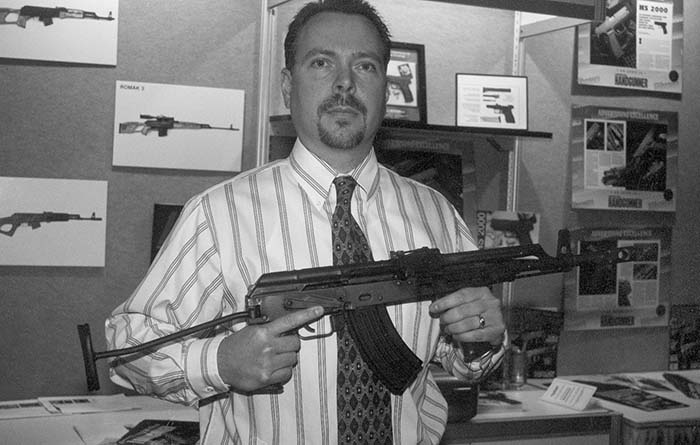
Also in the new product arena, the Winchester Model 1300 Camp Defender® is a multi-purpose camp shotgun good for personal protection. Features include a rugged, dark-stained hardwood stock, fully-adjustable open sights, eight-shot capacity, and 22” barrel. The interchangeable WinChoke® system allows for versatility in the use of buckshot, birdshot or slugs.
Sturm, Ruger has come out with a version of its venerable 10/22 rifle in stainless steel, with a futuristic-looking laminate thumbhole stock. It is furnished without sights.
North American Arms displayed a prototype of its long-anticipated .380 ACP double-action pistol. Looking very similar to its highly successful “Guardian” .32 ACP design, the new convenient, reliable and effective-appearing .380 ACP product will be on dealer’s shelves soon.
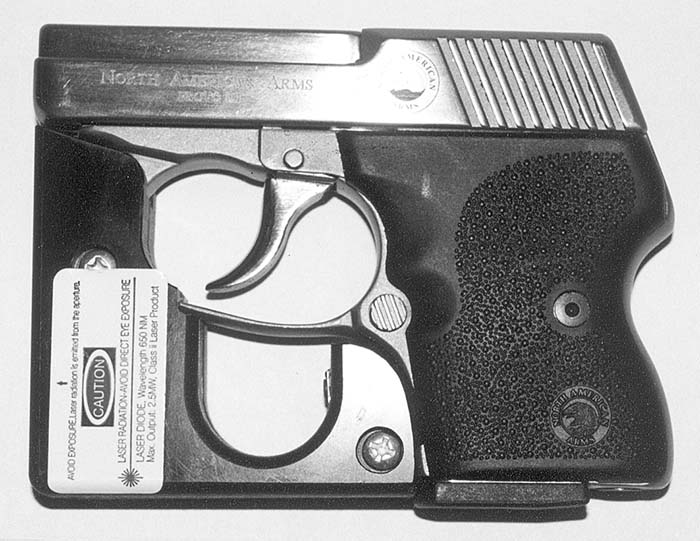
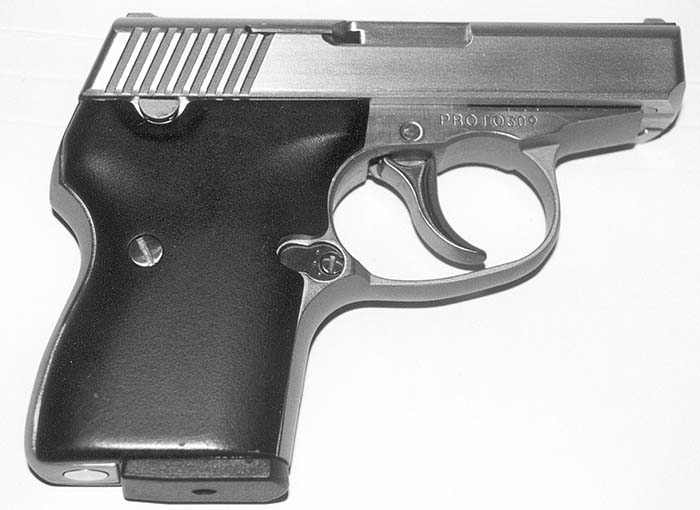
North American Arms is now making available its folding grip assembly for its .22 WRM mini-revolvers. Previously, this accessory was available only for .22 LR-chambered mini-revolvers. There is also a laser sight “Slipper” attachment available for the North American Arms .32 ACP Guardian pistol. The device not only provides a handy laser-aimer, but it changes the profile of the pistol to a square shape, which could give the appearance of the pistol being a wallet to the observer, when carried in the pocket.

Beretta USA has decided to eliminate its dealer direct program on its handgun line. The company’s dealer direct program on long guns will continue.
Beretta also unveiled the new “Alley Cat,” a limited edition .32 ACP “Tomcat” pistol fitted with AO Sight System’s “Big Dot” Express tritium sights. The Alley Cat package includes a black Alcantara inside-the-pants holster.
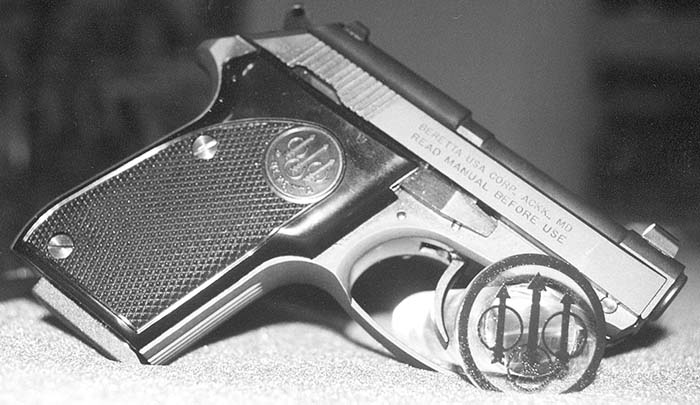
Talon Industries, Inc.’s new T-100 .380 ACP and T-200 9mm compact pistols are available from some of the top distributors, including RSR Wholesale, Alamo Leather, Ellett Brothers, Scott Wholesale, Chattanooga Shooting Supplies, Southern Ohio Gun Distributors, Euclid Sales and Valor Corp. The hammer, firing pin and component parts of both pistols are made from heat-treated 416 stainless steel. The frame and slide are fashioned of alloy. The grip is made from Dupont glass-filled polymer.
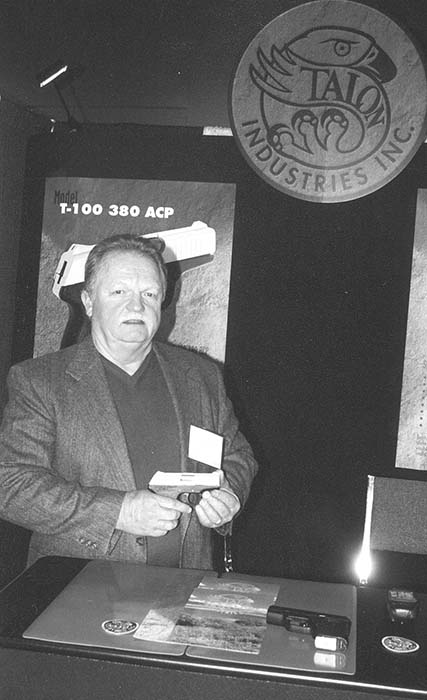
Both Talon models also have a visible load indicator, which rises above the slide about .060” when a round is in the chamber. The load indicator can also be felt in the dark to determine the pistol’s status by running a finger over the top of the slide. The pistols’ double-action operation and load indicator feature make them among the safest on the market. Watch for either a .38 Spl. revolver or a .32 ACP pistol from this innovative maker by the year 2002.
SIG Arms showed several new handguns. The SIG Model 220 is a new .45 ACP pistol with stainless steel slide and frame. The SIG P210 in 9mm is now back in production, and the SIG P226 9mm Sport is going into production.
Hi-Point Firearms has added a compensated .380 ACP pistol to its economically priced pistol line. A laser sight is available as an option.
Heritage Manufacturing has temporarily discontinued production of its sole semi-auto pistol, the Stealth. Formerly made in 9mm and .40 S&W, the Stealth has been discontinued until the political climate becomes more favorable to lower-priced pistol makers and the cost of manufacturer’s liability insurance comes down.
Some handgun makers will now be including a gun safety CD-rom in their product packaging as a result of efforts led by Bill Jeffrey of Dan Wesson Arms, during the show. The idea is to more involve gunmakers in taking an active role in firearms safety and public affairs issues.
Ruger 10/22 Accessories
Butler Creek’s™ new Packer™ stock system features a compact takedown design enhancing the portability of the popular Ruger 10/22 rifle. It employs a patent-pending Cam-Lock™ system for quick attachment of the barrel to the receiver in the field. Disassembly is as simple as pulling the forearm down and removing the barrel. With the barrel removed, the stock folds down to a length of 21 inches.
Attaching the barrel to the receiver is also a simple process. The shooter merely starts the barrel into the receiver, making sure the V-Cam fits into the barrel notch, and then pushes the forearm upward to the barrel where it and the barrel lock into position. The Packer stock is a synthetic design made from a proprietary polymer blend that is injection molded at Butler Creek’s own facility.
Butler Creek’s new match-grade steel barrels for the Ruger 10/22 rifle feature a premium tensioning system and aluminum sleeves to provide a combination of accuracy, light weight and cooling capacity. The 18-inch barrels (.920-inch outside diameter) are available in a black “vented” model with a slotted anodized aluminum outer sleeve and a silver cooling “finned” model with a radially grooved, anodized aluminum sleeve. Both models use the Bentz Match Chamber and a recessed target crown for accuracy.
The black vented model has 24 cooling slots that dissipate heat through the flow of air between it and the inner barrel tube. It is fitted with a precision-machined 4150 carbon steel barrel to complement blue receivers.
Butler Creek’s silver cooling finned model has a solid extruded sleeve with 10 specially-engineered full-length radial fins to provide 60% more cooling surface than a typical, one-piece .920-inch diameter barrel. During the manufacturing process, the cooling fins are heated prior to installation. As they cool, the fins bond to the inner 416 stainless steel barrel to create a “bi-metal component” for better performance.
Smart Holster
New to the Uncle Mike’s SIDEKICK® PROFESSIONAL line is the Pro4™ ID Holster, an evolutionary advancement in weapon retention technology. This is the first holster to release the sidearm only after reading the user’s fingerprint.
“We’ve developed this technology specifically to provide a holster that law enforcement officers can use easily and trust fully,” says Tom Marx, the product line’s director of marketing. “We are confident that the obvious benefits of this technology will revolutionize arms retention for law enforcement professionals and will ultimately carry over to applications in both home and individual handgun security as well.”
Traditionally, retention holsters were designed to help an officer retain the sidearm during a scuffle. Most retention holsters require a special drawing technique to remove the gun. However, it is still possible with such models for a criminal to steal the officer’s gun, either by a chance movement or by knowing the special technique. The common notion is if the wearer can draw the gun, then someone can steal the gun.
The technology used in the Pro4 ID Holster makes it virtually impossible for anyone other than an authorized individual to remove the handgun. It is thus the first holster that allows the officer to draw the gun but does not allow an unauthorized user to remove it. The unlocking mechanism is made unique to each wearing officer. A personalized fingerprint reader recognizes the wearer as well as other specifically programmed individuals. Multiple prints can be programmed, thereby allowing different fingers from each hand, as well as those from regular partners and supervisory personnel, to be recognized.
In use, the officer places a finger on the protected reader surface and the related circuitry allows the software to check the officer’s print against those stored. If it is accepted, the passive locking mechanism “opens.” The officer is alerted to this condition by a self-contained, pager-like vibrator. The entire process occurs in less than one second. The officer can then draw the handgun in a conventional manner. Unlike most current retention holsters, the user does not have to practice a specialized technique of employment.
The Pro4 ID Holster is initially available for Glock Models 17, 19, 22 and 23 in Cordura® and plain, basketweave or GlossBlack Mirage® finishes. Additional models to be introduced later include Beretta 92 and 96 variants; Glock 23, 21, 29 and 30; SIG 220 and 226 variants; and Smith & Wesson 3 1/2 to 4” 9mm and .40 cal. models.
The 2001 NASGW show will be held November 15-17, 2001 in Phoenix, Arizona and it portends to be another good one. At the close of the year 2000 show, nearly all of the exhibit space for the 2001 show had already been reserved.
| This article first appeared in Small Arms Review V4N8 (May 2001) |











